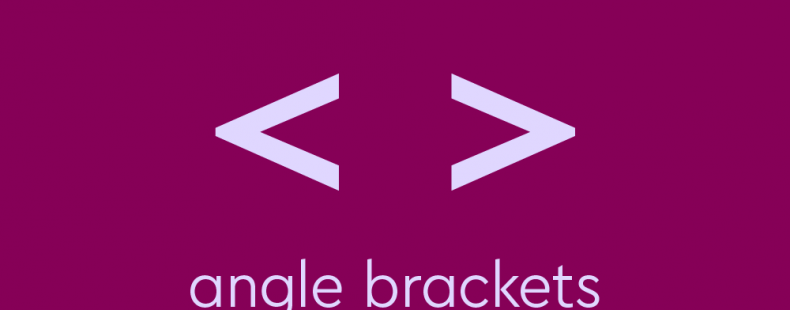When it comes to brackets, parentheses are the pair of punctuation marks that most people can quickly identify. Punctuation experts may even know about square brackets or the rarely used braces. But you’ll be hard pressed to find the punctuation guru who has had ample opportunity to use angle brackets. Of all of the brackets, angle brackets have the least usage (typically none) in formal writing, and there are scant reasons to use them even in informal writing.
What are angle brackets?
Angle brackets, sometimes known as chevrons, are a pair of punctuation marks that take the form of < and >. These marks are often considered to be a type of bracket, the same category that parentheses, square brackets, and curly brackets/braces are considered to belong to. Compared to these punctuation marks, angle brackets are very rarely used in writing. Angle brackets see more usage in fields such as mathematics or computer programming than they do in writing. In math, for example, a single angle bracket is commonly used to mean that something is “less than” (<) or “greater than” (>) something else.
Usage of angle brackets
In English, angle brackets are rarely used in writing. In some languages, a double set of angle brackets may be used in place of quotation marks to contain quotes. In English, they may be used informally to insert asides, indicate speech in a foreign language, or to mention a website, but all of these uses are rare even in informal writing.
Aside: A double pair of angle brackets might be used to insert asides, but most writers will simply use parentheses for this reason instead:
- My cat is stuck in a tree! <<Why does she keep climbing them?>>
Foreign speech: In comic strips or comic books, double pairs of angle brackets might be used to indicate someone is speaking in a foreign language:
- English tourist: Hello, friends! Where is the train station?
- French man: <<What did he say?>>
- French woman: <<I don’t know. Maybe he needs to use the restroom.>>
Mentioning websites: At one time, certain style guides recommended using angle brackets when mentioning a website in writing. As websites have become more and more familiar, the rules regarding this may have changed, however, so it is best to consult the style guide you use.
- For more information, you can find a longer version of this article at <www.howtouseanglebrackets.grammar>
Outside of these rare instances, angle brackets are also sometimes used in other fields such as math, physics, or computer programming. For example, you might see angle brackets used to represent a data set or to mark an action in a computer code:
- When entering your data, please type <<USER NAME>> followed by <<USER PASSWORD>> before proceeding to the next window.
Punctuate perfectly with Grammar Coach™
Confused about punctuation and its proper use? The Thesaurus.com Grammar Coach™ platform makes writing papers, essays, emails, and a whole lot more a whole lot easier. This writing tool uses machine-learning technology uniquely designed to catch grammar as well as spelling errors. Its Synonym Swap will find the best nouns, adjectives, and more to help say what you really mean, guiding you toward clearer, stronger, writing.














